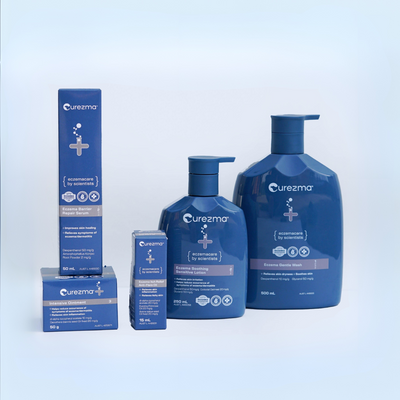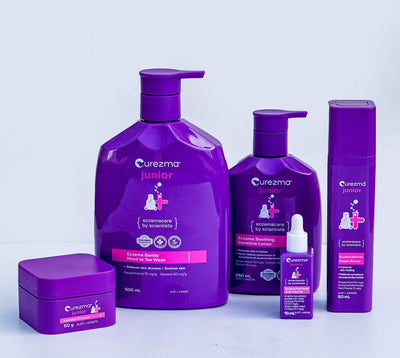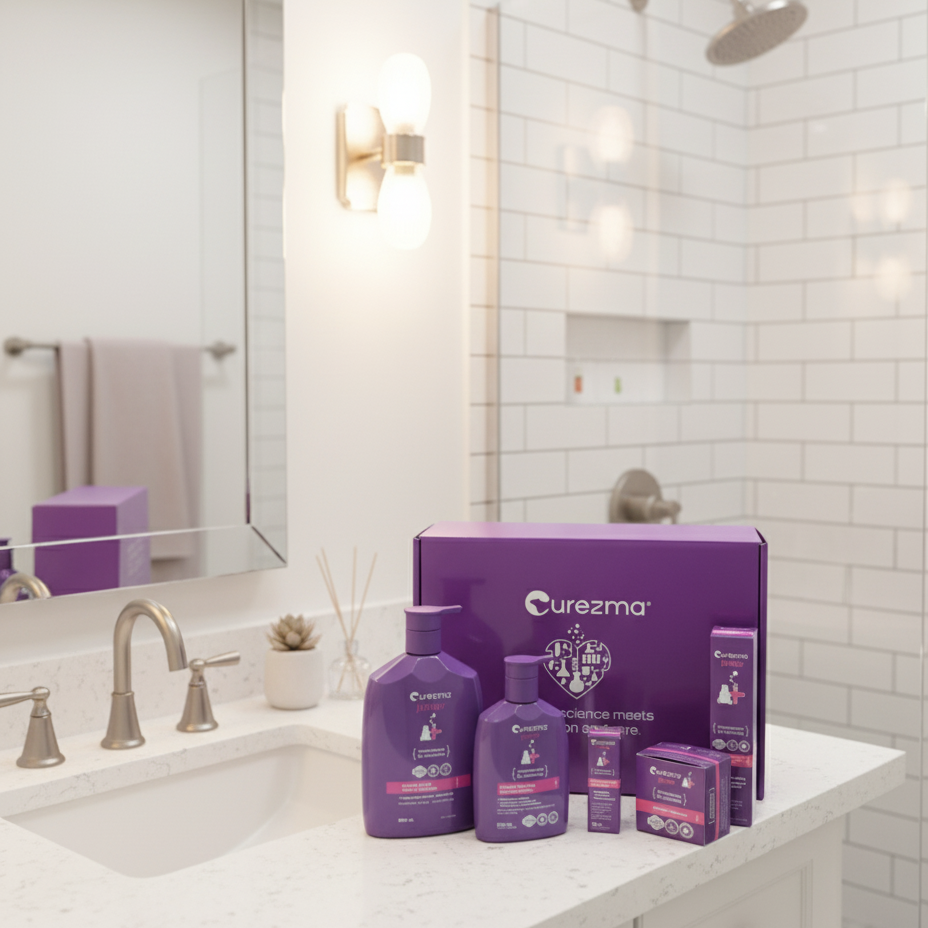Cracked, Dry Skin This Winter? It Might Be Asteatotic Eczema

That tight, cracked skin in winter? It might be more than just dryness — it could be asteatotic eczema, a common (but often missed) winter skin condition. Here’s what causes it and how to treat it.
What is Asteatotic Eczema?
Also called “eczema craquelé” (named after the cracked pattern it causes on the skin), asteatotic eczema is a type of eczema that shows up when your skin’s natural moisture barrier is struggling — especially in cold, dry conditions.
It’s most common in winter, in older adults, and in people with already sensitive or eczema-prone skin. But honestly? Anyone with dry, reactive skin can experience it when conditions are right (or rather, wrong).
Common signs include flaky, cracked skin (especially on your legs or arms), intense itch after showers, and a tight, uncomfortable feeling that regular moisturiser just can’t fix.
Why Does Asteatotic Eczema Flare Up in Winter — And What to Do About It
Why? The air is dry — both outside in the cold and inside from heating.
Dry air pulls moisture from your skin, leaving it cracked, tight, and vulnerable.
What to do: Use a humidifier indoors and moisturise frequently to replenish lost hydration.
Why? Hot showers and harsh soaps feel comforting in winter — but they strip away your skin’s protective oils.
That combo weakens your barrier and leaves your skin more prone to cracking, irritation, and water loss.
What to do: Stick to short, lukewarm showers and switch to a gentle, soap-free cleanser like Curezma’s Hydrating Cleanser.
Why? Over-cleansing or scrubbing removes the skin’s natural protective layer.
This leaves your skin exposed and more prone to irritation and flare-ups.
What to do: Cleanse only when needed and avoid abrasive tools or cloths.
Why? Friction from winter clothes can irritate dry or inflamed skin.
Wool and synthetic fabrics can make itching worse and cause flare-ups.
What to do: Wear soft, breathable fabrics like cotton, and layer gently.
Why? Your skin loses water rapidly after bathing if not sealed in.
There’s a short window where your skin is primed for moisture — miss it, and it dries out even more.
What to do: Moisturise within 3 minutes of stepping out of the shower with a rich ointment or barrier-repair product.
Curezma’s Winter Rescue Routine:
Featuring our new Head-to-Toe Wash and Soothing Sensitive Lotion
Step 1: RINSE
Curezma® Eczema Gentle Head to Toe Wash (New)
This non-drying, gentle formulation removes impurities while supporting the skin microbiome.
Actives: 10% Glycerol, 3% Decyl Glucoside
Lightly wet skin with water (not too hot). Dispense the wash into hands and gently massage onto the skin. Rinse when finished.
For use on face, body & hands. Suitable for all skin types, including eczema-prone and sensitive skin.
Step 2: REPAIR
Curezma® Eczema Soothing Sensitive Lotion (New)
Relieves skin dryness and irritation while restoring skin barrier function. Best used after bathing while skin is still damp.
Actives: 3% Colloidal Oatmeal, 10% Glycerol, 2% Shea Butter
Apply generously to the whole body. Use daily to help reduce the occurrence and symptoms of mild eczema.
Step 3: RETAIN
Curezma® Intensive Ointment
Deeply moisturises and forms a protective barrier to lock in hydration for up to 100 hours.
Use a fingertip amount on affected areas. Apply morning and night after the Barrier Repair Serum.
Step 3: RETAIN
Curezma® Intensive Ointment
Deeply moisturises and forms a protective barrier to lock in hydration for up to 100 hours.
Use a fingertip amount on affected areas. Apply morning and night after the Barrier Repair Serum.
References
-
DermNet NZ – Asteatotic Eczema (Eczema Craquelé)
https://dermnetnz.org/topics/asteatotic-eczema -
National Eczema Society – Asteatotic Eczema
https://eczema.org/information-and-advice/types-of-eczema/asteatotic-eczema -
Cleveland Clinic – Asteatotic Eczema Overview
https://my.clevelandclinic.org/health/diseases/asteatotic-eczema -
Healthline – Asteatotic Eczema: Symptoms and Management
https://www.healthline.com/health/eczema/asteatotic-eczema








